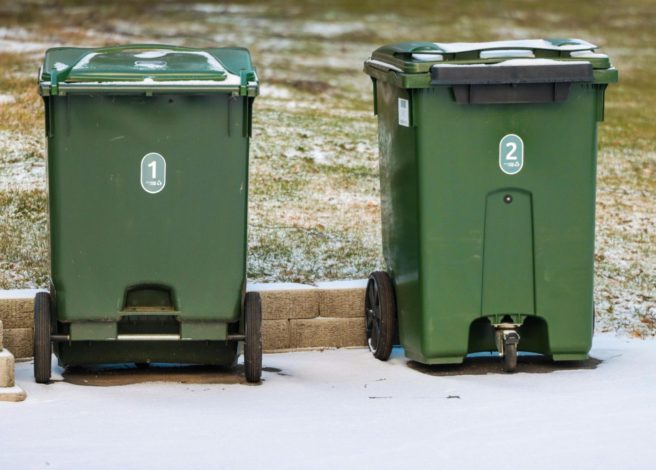At a Glance
- Understand the recycling process: Curbside pickup → MRF sorting (optical, mechanical, manual) → cleaned and processed materials.
- Single-stream vs. dual-stream affects contamination and sorting efficiency.
- Prep right: rinse lightly, remove hazardous items, and don’t bag recyclables.
- Tailor packaging to local systems: know what your regional MRF accepts and educate customers accordingly.
“Reduce. Reuse. Recycle.” This has been instilled in most of us for a large portion of our lives. Without research, we can’t accurately gauge how many people are truly reducing and reusing materials. But we certainly admire the creativity behind innovations like transforming an old pool net into a gutter cleaner with some strategically placed duct tape. However, we can take a closer look at current programs and how the recycling process works.
That curiosity around recycling doesn’t end at home — it follows your customers into every interaction, including mealtime.
Your customers want to do the right thing. They finish their meal, grab your takeout container, and pause at their recycling bin. Can this actually be recycled? Will it make a difference? That moment of uncertainty isn’t just about waste — it’s about their relationship with your brand.
The widely circulated global statistic that “90% of plastic doesn’t get recycled” can make the entire endeavor seem futile. However, about 32% of recyclable materials are recovered from waste in the United States, according to the Environmental Protection Agency. And the current technology and systems in place in the United States allow for much more recycling, but increasing the recycling rate and optimizing the system means changing consumers’ behavior and investing in education.
It’s Time for Change
This week, we had the opportunity to interview Madelyn Hart, the Outreach Specialist at USA Waste & Recycling. Madelyn has been dedicated to environmental education since joining the company in 2023, where she engages with municipalities, schools, and businesses to promote effective waste and recycling practices. With a focus on program development, education, and community partnerships, she works tirelessly to improve public understanding and trust in the waste management industry. Madelyn brings valuable expertise in public administration to her role, having earned her Master’s degree in this field from the University of Connecticut (UCONN).
This article will guide you through the complete recycling process — from understanding how modern recycling facilities actually work to implementing specific strategies for different food industry roles. You’ll learn how to choose packaging that recyclers accept instead of reject, understand what your customers need to recycle effectively, and use practical tools to communicate sustainability in ways that strengthen — rather than complicate — their experience with your brand. By the end, you’ll have a clear action plan to transform recycling confusion into customer confidence.
Understanding the Recycling Journey
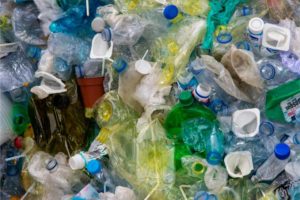 As a food industry professional, understanding what actually happens to packaging after it leaves your establishment allows you to guide your customers toward effective recycling practices.
As a food industry professional, understanding what actually happens to packaging after it leaves your establishment allows you to guide your customers toward effective recycling practices.
Single Stream vs. Dual Stream
Recycling programs typically come in one of two forms: single stream and dual stream.
- Single stream recycling allows consumers to place all recyclable materials — paper, plastic, metal, and glass — into one bin. It’s simple, convenient, and increases participation because there’s no sorting required at home. A specialized facility (a MRF — more on this to come) sorts the materials later.
- Dual stream recycling requires separating recyclables into two categories — usually paper/cardboard in one bin and containers (plastic, metal, glass) in another. This has traditionally resulted in cleaner materials but can be confusing and more time-consuming for households, which can reduce participation. With the advent of modern MRFs for single stream recycling, these materials now reach the same level of cleanliness as those from dual stream systems.
Municipal Programs
In these programs, the town either provides the service itself through municipal employees or contracts with a single hauler to service all neighborhoods. Municipal programs are convenient for residents. They don’t have separate bills to manage. Instead, the town includes the service in its budget and funds it with taxpayer money. This centralized method can be more fuel-efficient. One truck serves the whole neighborhood with standardized services town-wide.
Private Collection
When towns don’t include waste collection in their budgets, homeowners can arrange their own service. Several haulers compete for individual residences on price and service, allowing residents to choose how and when they recycle. They can select from weekly or monthly pickups at various prices. Private collection offers more flexibility for personal choices in the recycling process.
Transfer Stations & Recycling Centers
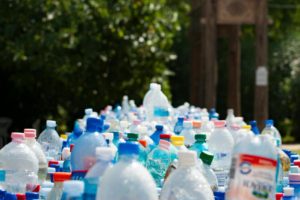 Transfer stations provide a centralized drop-off point for recyclable materials for those who do not want curbside service (For example, in Connecticut, upwards of 98% of the State has access to curbside recycling. To learn more about recycling rates in your state, you should view national-level benchmarking reports like this one from The Recycling Partnership.) These facilities act as collection sites, holding materials until they are moved to processing facilities. Municipal transfer stations — often known as the ‘town dump’ or ‘recycling centers’ — do more than collect trash. They also provide special areas for items that can’t go in curbside bins, including electronics, appliances, mattresses, and hazardous waste like paint. Residents can also drop off special items, such as scrap metal, rigid plastics, textiles, cooking oil, and construction debris for recycling or disposal.
Transfer stations provide a centralized drop-off point for recyclable materials for those who do not want curbside service (For example, in Connecticut, upwards of 98% of the State has access to curbside recycling. To learn more about recycling rates in your state, you should view national-level benchmarking reports like this one from The Recycling Partnership.) These facilities act as collection sites, holding materials until they are moved to processing facilities. Municipal transfer stations — often known as the ‘town dump’ or ‘recycling centers’ — do more than collect trash. They also provide special areas for items that can’t go in curbside bins, including electronics, appliances, mattresses, and hazardous waste like paint. Residents can also drop off special items, such as scrap metal, rigid plastics, textiles, cooking oil, and construction debris for recycling or disposal.
The Journey Inside a(n) MRF: Where Technology Shines in the Recycling Process
After collection, facilities often consolidate recyclables and transfer them to a Materials Recovery Facility (MRF, pronounced ‘murf’). Don’t confuse this with the little blue people we all loved in the ’80s.
The Modern Automated MRF
Today’s advanced facilities, like USA Waste & Recycling’s MRF in Berlin, Connecticut, mix cutting-edge technology with some human support in the recycling process. Here’s how it typically works:
- Arrival and pre-sort: Materials arrive at the tipping floor and are loaded into a hopper (a large funnel-shaped container that feeds materials into the sorting equipment). Workers in the pre-sort area remove hazardous items and tanglers (ropes, hoses, tarps) that could damage equipment. It’s not uncommon to find car parts, garden ornaments, or even entire fences in the mix!
- Initial separation: Angled belts and star screens (large wheels) sort materials by weight, size, and shape. They distinguish between two-dimensional items (like paper) and three-dimensional ones (like containers).
- Optical scanning: Modern scanners use light beams to detect materials based on their chemical makeup. These scanners can make up to 600 picks per minute, compared to a human sorter’s 60. Jets of compressed air sort the materials.
- Deep laser technology: This is where things start to get really futuristic. Modern MRFs use deep laser technology to find black plastics. Traditional scanners struggled with this, as they couldn’t spot them on black conveyor belts. This new technology detects black plastics, moves them into the appropriate stream and recycles them. These were once discarded. Behold, the power of technology! It’s worth noting that not all MRFs contain this level of sorting technology. These systems are very intricate and expensive. In those cases, the black plastics (such as black bottoms of the popular prepared hot foods containers) are thrown away.
- Quality control: Human workers provide final quality checks, ensuring proper separation and removing any remaining contaminants.
- Baling and storage: Sorted materials are compacted into large bales, organized by material type, and stored until buyers are found.
See how a high-tech MRF works in this video from USA Waste & Recycling!
From MRF to Manufacturer: The Final Steps
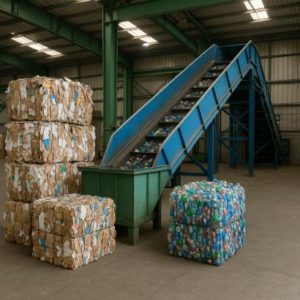 You thought it ended there? The fun is just getting started! After being sorted at the MRFs, recycled materials begin their next journey: being transformed into new products. But before they can be reborn, they must be sent to specialized recycling facilities — each tailored to handle specific material types (for example, glass is routed to glass-processing centers, and PET plastic is directed to PET-specific processors). These materials experience the following along the way:
You thought it ended there? The fun is just getting started! After being sorted at the MRFs, recycled materials begin their next journey: being transformed into new products. But before they can be reborn, they must be sent to specialized recycling facilities — each tailored to handle specific material types (for example, glass is routed to glass-processing centers, and PET plastic is directed to PET-specific processors). These materials experience the following along the way:
- Market-driven sales: Recycled commodities follow economic trends similar to the stock market. Plastics’ prices often move inversely to oil prices — recycled plastic becomes more attractive to manufacturers when oil is expensive.
- Quality inspection: Buyers may inspect or purchase sample bales to test material quality.
- Domestic processing: Most recycled materials stay within North America and are transported by truck or train to manufacturers.
- New life: Materials are processed into flake, pellet, or directly into new products. Recycled paper becomes new paper, plastic becomes decking, furniture, or new containers. It’s been born again!
How to Guide Your Customers to Recycling Success
Choose Packaging Strategically
- Research local recycling capabilities before selecting packaging materials.
- Prioritize widely recyclable materials like #1 and #2 plastics, aluminum, and cardboard.
- Avoid problematic combinations like plastic-lined paper or multi-layer packaging that can’t be easily separated or sorted in the recycling process.
Educate Through Clear Communication
- Label packaging clearly with recycling instructions specific to your area.
- Create simple guides showing how to prepare containers (rinse, remove lids if needed). This can be as simple as a “PLEASE RECYCLE ME” message on the packaging.
- Address common mistakes like bagging recyclables or including food waste.
Leverage Technology and Resources
Many waste management companies offer online tools to verify what’s recyclable in specific areas. Companies like USA Waste & Recycling provide search tools (click here to see) to help determine if products are recyclable in local facilities.
Actionable Steps for Food Business Professionals
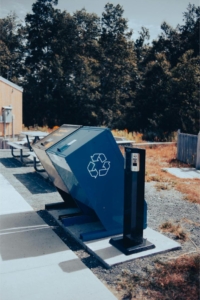 Audit your current packaging using local recycling facility guidelines.
Audit your current packaging using local recycling facility guidelines. - Develop customer education materials specific to your area’s recycling capabilities.
- Train your team to communicate recycling best practices.
- Partner with local waste management companies for ongoing education and updates.
- Measure and communicate impact to customers who want to see results.
Recycling is Bin-eficial!
Contrary to what you may have heard from your snarky neighbor who rolls their eyes at municipal trucks, recycling does work! By taking leadership in recycling education, you’re not just reducing waste — you’re transforming your customers from confused consumers into confident environmental stewards. You’re building a community around shared values and demonstrating that business success and environmental responsibility go hand in hand.
Your informed guidance turns recycling from a source of anxiety into a point of connection between your business and customers who care about the future. Until we develop magical sorting bins that high-five people for proper recycling, your leadership is the next best thing.
Do you want to learn more about USA Waste & Recycling or the recycling process? Visit their website today or contact them directly.
Want to learn more about packaging sustainability? Visit the Inline Plastics Learning Center today!

